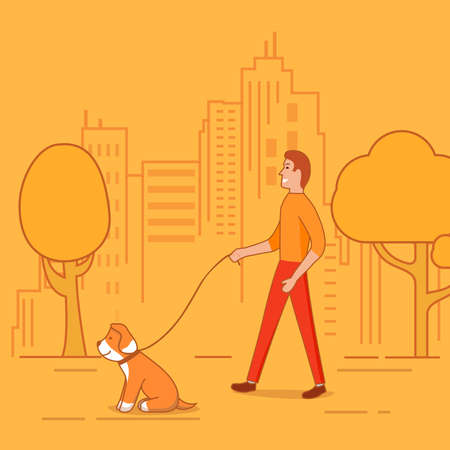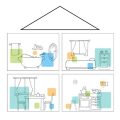Understanding Your Pet’s Mobility Challenges
When it comes to creating a comfortable home environment for pets with mobility issues, the first step is understanding what your pet is going through. Pets, just like people, can develop mobility problems due to age, injury, or underlying health conditions such as arthritis or hip dysplasia. For example, you might notice your senior dog hesitating at the bottom of the stairs or your cat struggling to jump onto their favorite windowsill. These are early signs that your furry friend is experiencing discomfort or physical limitations.
Common mobility issues include stiffness after rest, limping, difficulty standing up, or reluctance to go for walks. You may also see changes in behavior—like a usually playful pup becoming withdrawn or a social cat hiding more often. Pay attention to subtle cues: Is your dog sliding on hardwood floors? Does your cat avoid the litter box because it’s hard to climb into? Recognizing these early warning signs allows you to act before minor struggles become major problems. By observing and identifying these challenges, you set the stage for making thoughtful changes that truly improve your pet’s quality of life.
Adapting Your Living Space
When your pet faces mobility challenges, modifying your home can make a world of difference in their comfort and happiness. Start by evaluating the layout of your rooms, hallways, and the arrangement of your furniture. The goal is to create clear pathways that allow your pet to move around safely without unnecessary obstacles or tight spaces. For example, rearrange bulky furniture to widen walkways and remove decorative items that could become tripping hazards.
Room-by-Room Adjustments
Each area of your house may require specific changes. In the living room, keep essential items—like water bowls or favorite beds—on the floor and within easy reach. Consider using rugs or non-slip mats on slippery surfaces like hardwood floors to prevent slips and falls. In bedrooms, place pet beds at ground level instead of on furniture, or use ramps if your pet prefers sleeping with you.
Furniture Placement for Accessibility
Strategically arranging your furniture plays a significant role in supporting your pet’s movement. Here’s a quick reference guide for optimizing common spaces:
| Area | Modification | Benefit |
|---|---|---|
| Living Room | Create wide aisles between sofas and coffee tables; add non-slip rugs | Easier navigation and fewer tripping risks |
| Bedroom | Keep pet beds on the floor; use ramps for access to human beds | Reduces jumping stress on joints |
| Hallways | Remove clutter; install nightlights if vision is impaired | Improves visibility and mobility, especially at night |
| Kitchens & Entryways | Add mats near food/water bowls; avoid raised thresholds | Prevents slipping during eating/drinking; smooth transitions between rooms |
Real-World Example: Making Hallways Safer
A Texas family noticed their senior dog struggled walking down their narrow hallway lined with shoes and backpacks. By clearing out clutter, adding a runner rug, and placing a small lamp with a motion sensor at one end, their dog regained confidence moving through the space—even at night.
The key takeaway: Small changes in how you organize and furnish your home can dramatically improve quality of life for pets with mobility issues. Prioritize accessibility and safety to help them feel comfortable and independent every day.

3. Choosing Pet-Friendly Surfaces and Flooring
For pets dealing with mobility issues, the type of flooring in your home can make a huge difference in their safety and comfort. Slippery surfaces like hardwood, tile, or laminate can increase the risk of falls and injuries for dogs and cats who already struggle to get around. To create a safer environment, it’s important to focus on non-slip flooring options. Many pet owners in the US choose to install vinyl or rubber flooring, which provides better traction while also being easy to clean. If replacing floors isn’t an option, area rugs are an excellent alternative. Placing sturdy, non-slip rugs or runners in high-traffic areas—like hallways and living rooms—can give your pet more confidence as they walk. Look for rugs with a strong grip backing to prevent sliding. Additionally, traction aids such as adhesive stair treads or paw wax can help your pet maintain stability on slick surfaces. For example, some families use foam mats around food and water bowls to keep their senior dog from slipping while eating. By prioritizing non-slip surfaces and using practical traction solutions, you’re actively reducing the risk of accidents and helping your furry friend feel more secure at home.
Providing Comfortable Resting Areas
For pets with mobility issues, having easy access to comfortable resting areas throughout your home is a game-changer. Thoughtful placement and the right materials can make all the difference in their daily comfort and quality of life. Here are actionable tips you can implement today:
Strategic Placement of Rest Spots
Place cozy beds or rest spots in locations where your pet spends the most time or needs to take frequent breaks, such as near the living room couch, by your bed, or close to entryways. This way, your pet never has to struggle far to find a comfortable place to rest.
Choosing the Right Bedding Materials
Supportive bedding is crucial for pets with joint pain or limited mobility. Memory foam beds are highly recommended because they contour to your pet’s body and help relieve pressure on sore joints. Look for orthopedic pet beds that have non-slip bottoms to prevent sliding on hardwood or tile floors.
Setting Up Accessible Rest Areas: A Quick Guide
| Location | Bedding Type | Why It Works |
|---|---|---|
| Living Room | Memory foam bed with washable cover | Centrally located; easy for supervision and social interaction |
| Bedroom | Low-profile cushion or supportive pad | Lets your pet stay close at night; low height helps easy access |
| Near Doorways | Small orthopedic mat | Provides a quick rest spot after walks or trips outside |
| Home Office/Workspace | Padded mat with non-slip base | Keeps your companion nearby while you work; safe on hard floors |
Pro Tip: Rotate and Refresh Rest Areas Regularly
If possible, rotate beds and cushions between locations every few weeks to keep things fresh and interesting for your pet. Wash covers frequently to maintain a clean and inviting environment, helping to prevent skin irritation or allergies.
5. Incorporating Ramps and Pet Stairs
When your pet faces mobility challenges, everyday activities like getting on the couch or snuggling up on your bed can become major obstacles. Ramps and pet stairs are practical solutions that empower pets to maintain independence and comfort while reducing strain on their joints. By adding these assistive devices in strategic spots around your home, you create a safer and more accessible environment.
Why Ramps and Stairs Matter
Pets with arthritis, hip dysplasia, or recovering from surgery often struggle with jumping or climbing. Ramps provide a gradual incline, making it easier for pets to reach higher surfaces without jumping. Pet stairs offer stable, short steps that are especially helpful for smaller breeds or cats who need a boost.
Everyday Uses at Home
Place a ramp next to the bed so your dog can join you at night without risking injury. Use pet stairs by the living room sofa so your cat can nap in their favorite sunny spot. If you have an SUV or truck, a portable ramp helps your dog get in and out of the car safely during vet visits or park outings.
Recommended Products in the U.S.
For indoor use, the PETSAFE CozyUp Bed Ramp is sturdy and designed to support dogs of all sizes up to 120 lbs. The Zinus Easy Pet Stairs offer soft foam steps with removable, washable covers—perfect for both cats and small dogs. For vehicles, the SOLVIT Deluxe Telescoping Pet Ramp is lightweight yet durable, ideal for travel. When choosing a product, consider your pet’s weight, preferred materials (foam vs. wood), and whether you need portability.
By incorporating ramps and pet stairs into your home setup, you’re not just making life easier for your pet—you’re actively promoting their safety, confidence, and quality of life every single day.
6. Maintaining a Safe and Stress-Free Environment
Creating a safe and calm home is essential for pets with mobility issues. Start by minimizing obstacles in their daily paths. Rearrange furniture to create wide, clear walkways—especially in high-traffic areas like hallways or living rooms. Remove low tables, loose rugs, or floor clutter that could trip or confuse your pet. Use non-slip mats on hardwood or tile floors to prevent slips, and secure cords or wires out of reach.
Keeping your home tidy is just as important. Clutter can be both a physical barrier and a source of stress for pets who already struggle to move around. Make it a habit to pick up shoes, bags, toys, and laundry from the floor. Store items in baskets or bins off the ground. If you have kids, teach them to keep their playthings away from your pet’s favorite paths.
A peaceful household atmosphere reduces anxiety for pets dealing with physical challenges. Try to maintain a predictable routine for feeding, playtime, and rest. Keep noise levels down by lowering TV volumes and limiting sudden loud sounds—especially during your pet’s rest times. Set up a quiet space with soft bedding where your pet can retreat if they feel overwhelmed.
Finally, involve all family members in maintaining this environment. Remind everyone to move slowly around your pet and avoid startling them. Encourage gentle interactions and respect your pet’s need for downtime. By managing clutter, reducing obstacles, and fostering calm energy at home, you’ll help your pet feel safe and supported every day.

